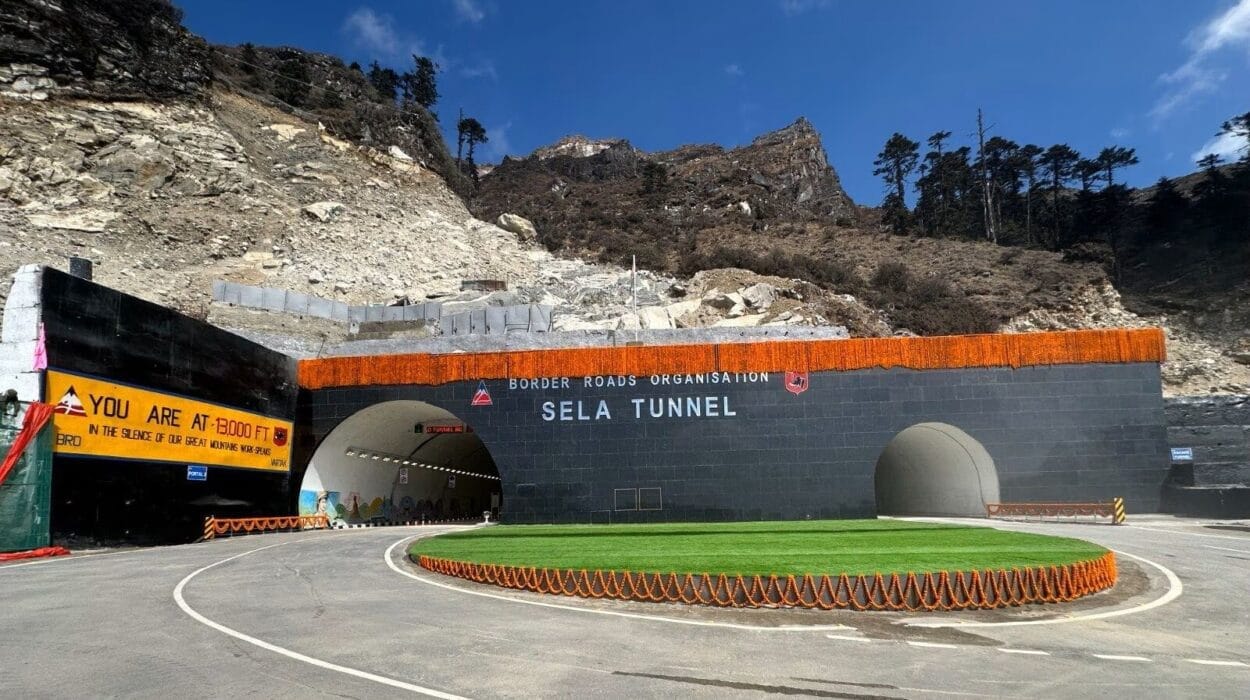India’s Sela Tunnel project, nestled in the picturesque state of Arunachal Pradesh, represents a significant milestone in infrastructure development. This ambitious endeavor aims to enhance all-weather connectivity to the Tawang region, a strategically vital area that has long been contested by China. In this article, we delve into the details of the Sela Tunnel project, its historical context, and its implications for national security.
The Sela Tunnel Project: An Overview
- Location and Significance:
- The Sela Tunnel project is situated in West Kameng district, connecting Tezpur to Tawang.
- At an impressive altitude of 13,700 feet, it stands as a testament to engineering prowess and determination.
- The region it serves has historical and geopolitical importance, given its proximity to the Line of Actual Control (LAC) with China.
- Components:
- The project comprises two tunnels and a link road:
- Tunnel 1: A 980-meter-long single-tube tunnel designed to withstand extreme weather conditions.
- Tunnel 2: A 1,555-meter-long bi-lane tunnel with provisions for traffic and emergency services.
- Link Road: A 1,200-meter stretch connecting the two tunnels.
- The project comprises two tunnels and a link road:
- Strategic Objectives:
- All-Weather Connectivity: The Sela Tunnel project aims to keep the Tawang region accessible throughout the year. Currently, the Sela Pass remains closed during harsh winter months.
- Reduced Travel Time: By bypassing the treacherous snow-covered Sela top, travelers will save over an hour when commuting between Tezpur and Tawang.
- Military Advantage: The tunnel provides a new alignment toward the LAC, facilitating smoother movement of military personnel and equipment. This advantage is crucial, especially considering the historical context.
Historical Context: The 1962 War
The Sela region witnessed intense conflict during the 1962 Sino-Indian War. Indian and Chinese forces clashed, with the People’s Liberation Army (PLA) overrunning Tawang on October 24 that year. The scars of that war remain etched in history, emphasizing the need for robust infrastructure to secure our borders.
Construction Milestones
- Foundation Stone Laid by PM Modi:
- In February 2019, Prime Minister Narendra Modi laid the foundation stone for the Sela Tunnel project.
- This marked the beginning of an ambitious journey toward improved connectivity and security.
- Blasting Through Challenges:
- The first blast for Tunnel 1 occurred in January 2021, followed by the final blast in January 2022.
- Tunnel 2 witnessed a breakthrough blast in October 2021.
- These milestones reflect the dedication of the Border Road Organisation (BRO) and their commitment to completing the project.
National Security and Beyond
- Boosting Military Preparedness:
- The Sela Tunnel project strengthens India’s military posture near the China border.
- Faster deployment of troops and weaponry to forward areas in the Tawang sector is now possible.
- Symbol of Resilience:
- Amid geopolitical tensions, the Sela Tunnel stands as a symbol of India’s unwavering commitment to fortifying its border infrastructure.
- It exemplifies our strategic imperative to safeguard national security.
Conclusion
The Sela Tunnel project transcends mere engineering marvel; it embodies India’s determination to overcome geographical challenges and secure its borders. As Prime Minister Modi inaugurates this historic achievement, we celebrate not just a tunnel but a beacon of progress and resilience.
References:
- The Indian Express: Sela Tunnel Project: 2 tunnels, link road — All you need to know
- Hindustan Times: Sela tunnel puts spotlight on border infra push amid China standoff







